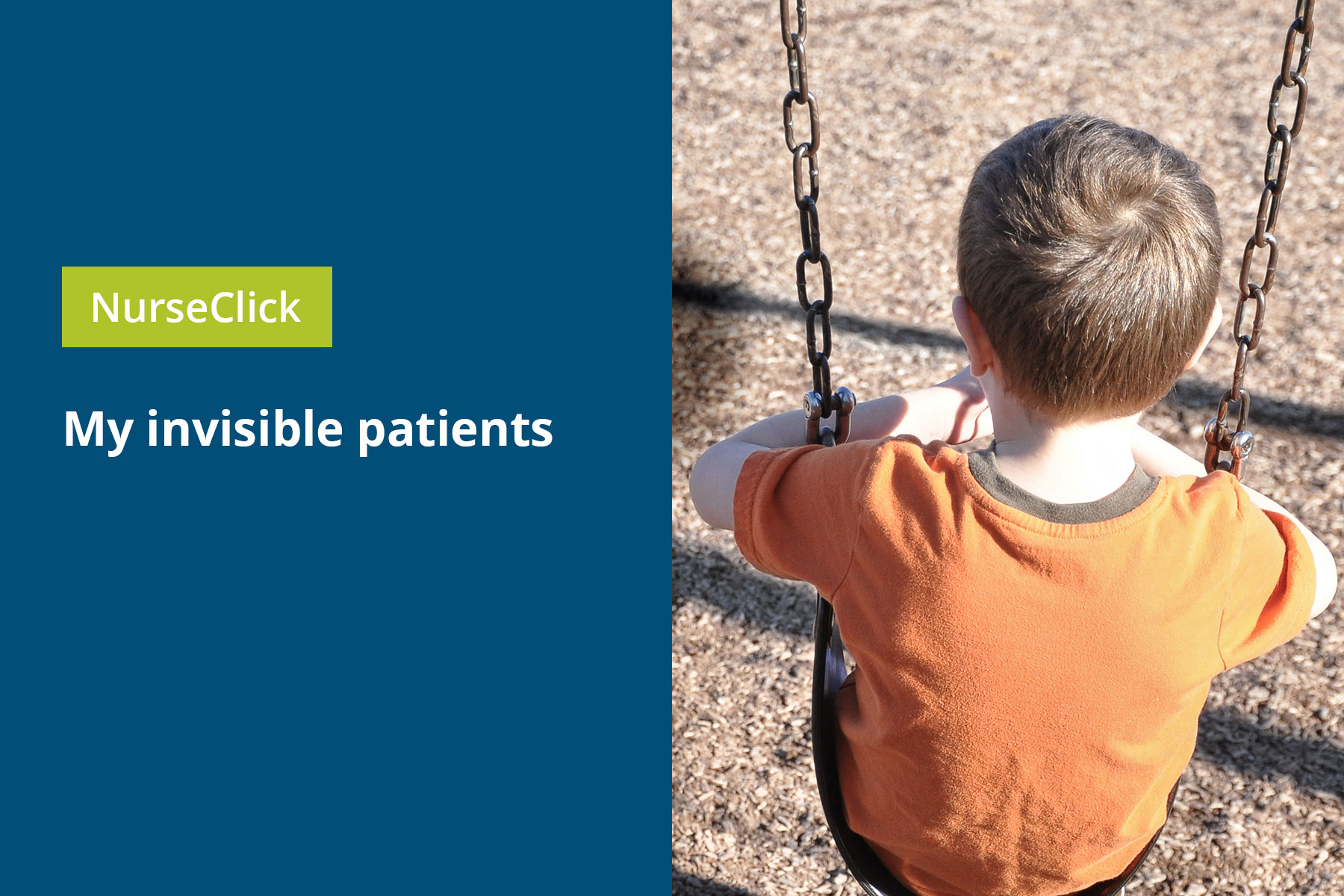Throughout my nursing career, I would like to think that I have had a significant impact on the lived experience of many patients, including patients whom I was never able to meet. Patients with whom I never had the opportunity to sit down and talk about their care and their needs. Patients who needed me to advocate for them just as much as any other patient, if not more. Patients who were faceless and nameless to me and have remained so even to this day. Even so, I know that I potentially contributed to a better outcome for each of them. Who are these invisible patients? They are the unknown and unseen children of the adults whom I have cared for. On numerous occasions, I have advocated for these children, by making appropriate referrals and reporting concerns, in an attempt to ensure their safety and wellbeing. Child protection awareness and prevention is about much more than just identifying inflicted injuries, intentional harm, or neglect. It is about thinking more broadly and taking the time to consider the lived experience of the child.
“Do you think about whether your adult patient is responsible for the care of a child?”
— Helen Bell MACN
Unmanaged mental health, substance misuse, and exposure to domestic violence are significant risk factors for child abuse and neglect (Bromfield & Miller, 2007). So much so that the term ‘toxic trio’ was coined to refer to the risk to children that increases when these concerns are present (Skinner et al., 2021). These factors can significantly impact parenting capacity, which will then have an impact on the risk of child abuse.
Symptoms of unmanaged mental health, such as emotional numbness, avoidance, flat or restricted affect, sleep disturbances, difficulties in concentrating, and irritability have been linked to neglect (Lopes et al., 2021), while some studies found that the risk of violence towards a child increases with untreated mental health disorders (Friedman & McEwan, 2018). According to the Australian Institute of Health and Welfare, “over 2 in 5 Australians aged 16–85 are estimated to have experienced a mental disorder at some time in their life, with 1 in 5 having experienced a mental disorder in the previous 12 months.” (Australian Institute of Health and Welfare, 2023).
A study published in New Zealand found that a child with at least one parent presenting to hospital or a health facility due to an alcohol-related incident was at 65 per cent higher risk of child maltreatment (Huckle & Romeo, 2023). Laslett et al. (2015) found that children living with one or both parents regularly using substances, either legal or illicit, are most likely to experience verbal abuse, inappropriate behaviour and lack of supervision or unsafe situations. It is well-known that substance use can lead to addiction, impaired judgement, impulsiveness and loss of self-control (Gateway, 2023). These factors have obvious implications for the safety and wellbeing of children living in these environments.
On average in Australia, one woman a week is murdered by her current or former partner, and one in three girls has experienced physical violence by the age of 15 (Australia Bureau of Statistics, 2015). Research tells us that children living in an environment where there is intimate partner violence are at much higher risk of abuse (Bedi & Goddard, 2007). Apart from the risk of being physically assaulted by perpetrators of violence, there is also a growing body of research demonstrating that exposure to chronic anxiety and toxic stress during childhood, impacts the growth and development of a child’s brain structures (Barlow, 2014). Children living in these homes would no doubt be experiencing significant levels of anxiety and stress.
In view of these facts, when an adult patient presents to your health facility as a result of unmanaged mental health, substance misuse or intimate partner violence, do you wonder if there are children living in their home? Do you think about whether your adult patient is responsible for the care of a child? Do you consider this even when there is no child present with your adult patient? One of the most important parts of our role as nurses is that of advocacy. Advocating for unseen children can be as easy as asking your adult patients, both male and female, one simple question, “Are there children living in your home?”. We need to begin to think more broadly about the issue of child safety and protection, and about children’s lived experience.
So when you head off for your next shift at your local health facility, remind yourself to think about your invisible patients. The ones that you won’t necessarily meet, or get to know, but the ones who are relying on you to be their voice.
This article was originally published in the Winter 2023 edition of ACN’s quarterly member publication The Hive. Members can access all past editions of The Hive on MyACN. Non-members can get a sneak peek by viewing our open-access articles.
By Helen Bell MACN

References
Australian Bureau of Statistics (ABS). 2017. Personal Safety Survey, Australia, 2016 (ABS cat. no. 4906.0). Canberra, ACT: ABS.
Australian Institute of Health and Welfare (2023). Mental health. https://www.aihw.gov.au/mental-health/overview/mental-illness
Barlow, J. (2014). Excessive stress disrupts the development of brain architecture. Journal of Children’s Services, 9(2), 143–153. https://doi.org/10.1108/JCS-01-2014-0006
Skinner, G., Bywaters, P., Bilson, A., Duschinsky, R., Clements, K. & Hutchinson, D. (2021). The ‘toxic trio’ (domestic violence, substance misuse and mental ill-health): How good is the evidence base? Children and Youth Services Review, 120 https://doi.org/10.1016/j.childyouth.2020.105678
Bromfield, L. M., & Miller, R. (2007). Specialist practice guide: Cumulative harm (PDF 795 KB).
Gateway Foundation (2023). Effects of Drug Abuse and Addiction. https://www.gatewayfoundation.org/about-gateway-foundation/faqs/effects-of-drug-abuse/
Huckle, T., & Romeo, J.S. Estimating child maltreatment cases that could be alcohol-attributable in New Zealand. Addiction. 2023; 118( 4): 669– 677. https://doi.org/10.1111/add.16111
Laslett, A. M., Mugavin, J., Jiang, H., Manton, E., Callinan, S., MacLean, S., & Room, R. (2015). The hidden harm: Alcohol’s impact on children and families. Canberra: Foundation for Alcohol Research and Education.
Laslett, A.-M., Room, R., Dietze, P. and Ferris, J. (2012), Alcohol’s involvement in recurrent child abuse and neglect cases. Addiction, 107: 1786-1793. https://doi.org/10.1111/j.1360-0443.2012.03917.x
Lopes, A.I.; Leal, J.; Sani, A.I. Parental Mental Health Problems and the Risk of Child Maltreatment: The Potential Role of Psychotherapy. Societies 2021, 11, 108. https://doi.org/10.3390/soc11030108
Skinner, G., Bywaters, P. & Kennedy, E. (2023). A review of the relationship between poverty and child abuse and neglect: Insights from scoping reviews, systematic reviews and meta-analyses. Child Abuse Review, 32(2), e2795. https://doi.org/10.1002/car.2795





